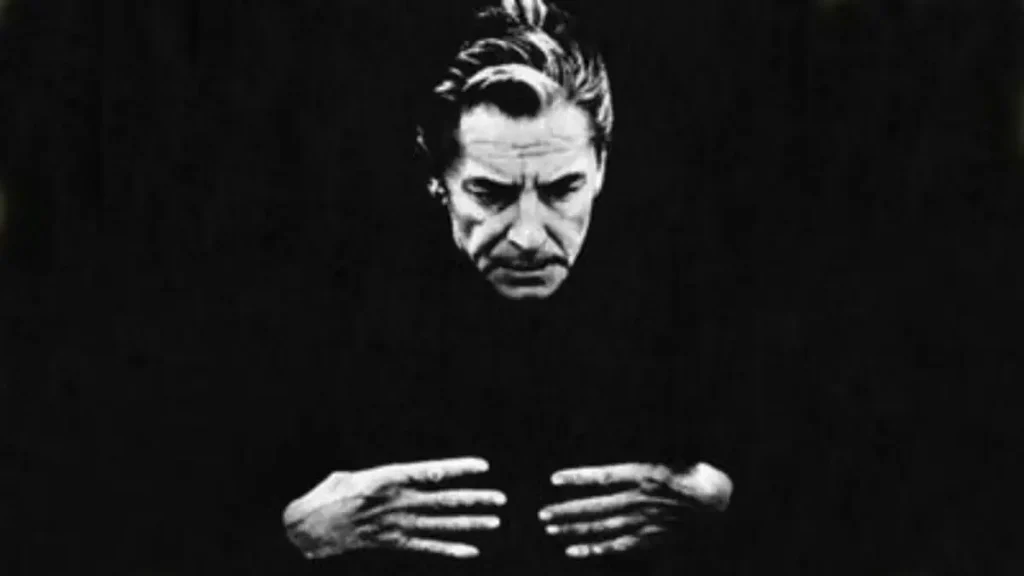Franz Liszt Chamber Orchestra performs Adagio in G Minor for violin, strings, and organ continuo, a neo-Baroque composition popularly attributed to the 18th-century Venetian master Tomaso Albinoni (8 June 1671 – 17 January 1751), but actually composed by 20th-century musicologist and Albinoni biographer Remo Giazotto (September 4, 1910, Rome – August 26, 1998, Pisa). 1st violin and conductor: Rolla János. This performance was recorded at the Basilica of the Pannonhalma Archabbey, Hungary.
Adagio [Albinoni/Giazotto]
The piece commonly known as Albinoni’s Adagio in G minor is one of the most famous and frequently performed pieces of Baroque music, despite its complex origins and modern creation. Often attributed to the Venetian Baroque composer Tomaso Albinoni, the piece was actually composed by the 20th-century musicologist and Albinoni biographer Remo Giazotto.
Giazotto claimed to have constructed the piece based on a fragment of a manuscript by Albinoni that he discovered in the ruins of the old Dresden State Library after it was destroyed during World War II. According to Giazotto, this manuscript fragment consisted of a few bars of melody and basso continuo, which he then expanded into the full Adagio movement that has become so well-loved today.
The Adagio in G minor is renowned for its hauntingly beautiful melody, underpinned by a stately, walking bass line and a rich harmonic texture that unfolds over a slow, steady tempo. Its emotional depth and melodic beauty have led to its widespread popularity, not only in classical music performances but also in films, television, and popular culture, making it one of the most recognized pieces of classical music.
Despite the piece’s association with the Baroque era, its style and emotional intensity bear the hallmarks of Romantic music, reflecting Giazotto’s own influence as much as, if not more than, Albinoni’s. The piece’s structure and orchestration, including the use of string instruments and organ, create a lush, evocative sound that has captivated audiences since its publication in 1958.
The story of Adagio’s creation and Giazotto’s role in its development have been subjects of interest and skepticism. Some researchers and musicologists question the existence of the original Albinoni manuscript fragment Giazotto claimed to have found, as it was never made available for public examination. Despite these uncertainties, the piece is often performed and recorded under Albinoni’s name, partly because of Giazotto’s assertion of its basis in Albinoni’s work and partly due to the piece’s stylistic nods to the Baroque period.
Regardless of its disputed origins, the Adagio in G minor has established itself as a staple of the classical music repertoire, beloved for its emotional resonance and timeless beauty. It stands as a testament to the power of music to transcend historical and stylistic boundaries, captivating listeners with its melancholic melody and profound expressiveness. Whether ascribed to Albinoni, Giazotto, or both, the Adagio remains a piece of enduring appeal, a poignant reminder of the universal language of music.

Related: Albinoni – Adagio [Lviv Virtuosos]
Remo Giazotto
Remo Giazotto served as a music critic (from 1932) and editor (1945-1949) of the Rivista Musicale Italiana and was appointed co-editor of the Nuova Rivista Musicale Italiana in 1967. He was a professor of the history of music at the University of Florence (1957-69).
In 1949, Giazotto became the director of the chamber music programs for RAI (Radio Audizioni Italiane), and in 1966 he was the director of the international programs organized through the European Broadcasting Union. He was also the president of RAI’s auditioning committee and editor of its series of biographies on composers.

Giazotto is famous for his publication of a work called Adagio in G minor, which he claimed to have transcribed from a manuscript fragment of an Albinoni sonata that he had received from the Saxon State Library. He stated that he had arranged the work but not composed it. He subsequently revised this story, claiming it as his own original composition. The fragment has never appeared in public; Giazotto stated that it contained only the bass line, and the work was copyrighted by Giazotto.
Franz Liszt Chamber Orchestra
The Franz Liszt Chamber Orchestra (Liszt Ferenc Kamarazenekar) was founded in 1963 by former students at the Franz Liszt Music Academy in Budapest. The first artistic director of the ensemble was Frigyes Sándor, a renowned professor of the Academy. After his death, one of Hungary’s leading violinists, Rolla János (b. 1944) was been concertmaster of the orchestra.
The orchestra has built up an international reputation which has been underlined by concerts in more than 50 countries, including the Carnegie Hall in New York, the Sydney Opera House, the Suntory Hall in Tokyo, the Théâtre de la Ville in Paris, and the Concertgebouw in Amsterdam.

Their repertoire consists of baroque, classical, romantic, and modern pieces as well. They have made more than 200 discs and played with soloists like Sviatoslav Richter, Yehudi Menuhin, Jean-Pierre Rampal, Isaac Stern, Mstislav Rostropovich, Vadim Repin, and Zoltán Kocsis to name a few. The orchestra consists of 16 strings, occasionally accompanied by a harpsichord soloist, winds, or other instruments.
Sources
- Remo Giazotto on Wikipedia
- Adagio in G minor on Wikipedia
- Franz Liszt Chamber Orchestra on Wikipedia

This is truly beautiful stuff. I hope to hear more of this in the future, It really brightened my day.
Thanks for watching, Michael!